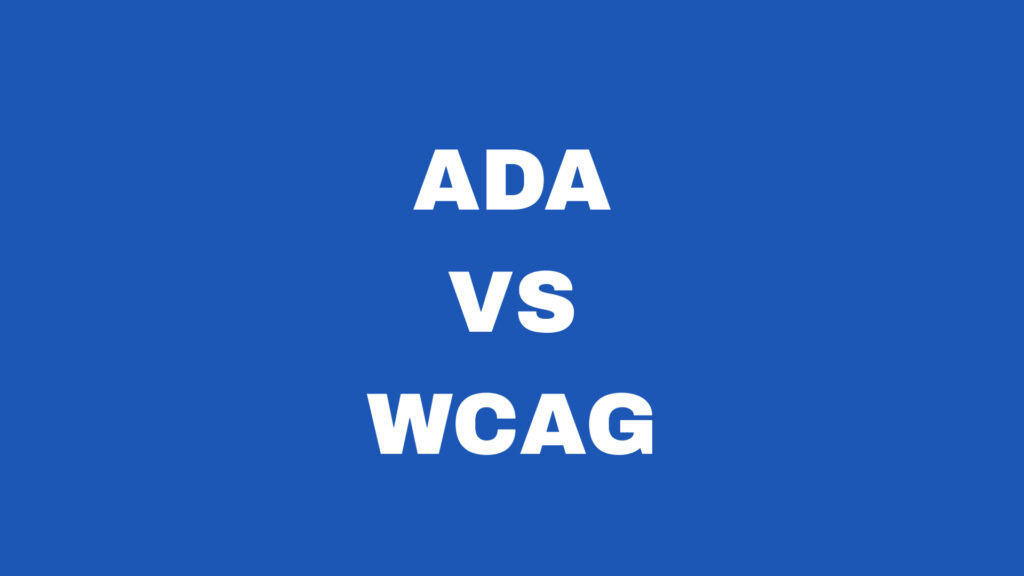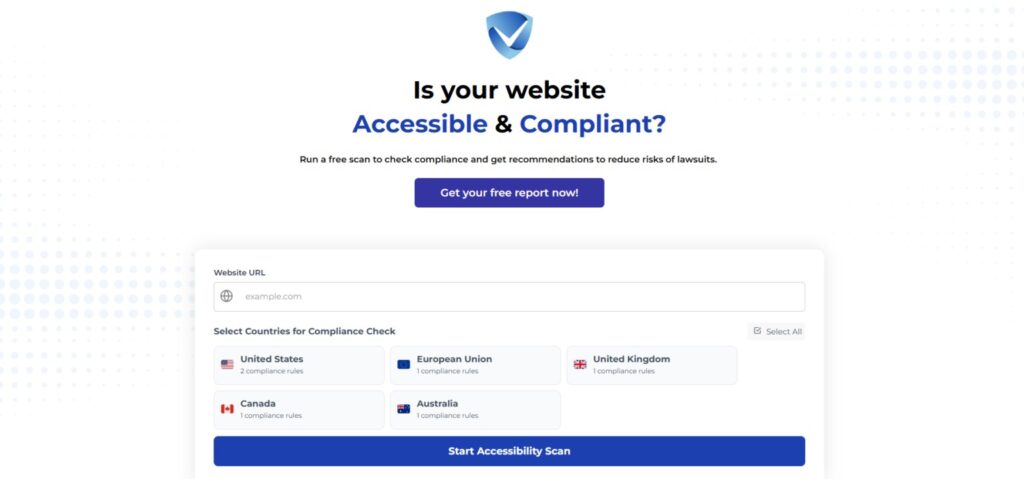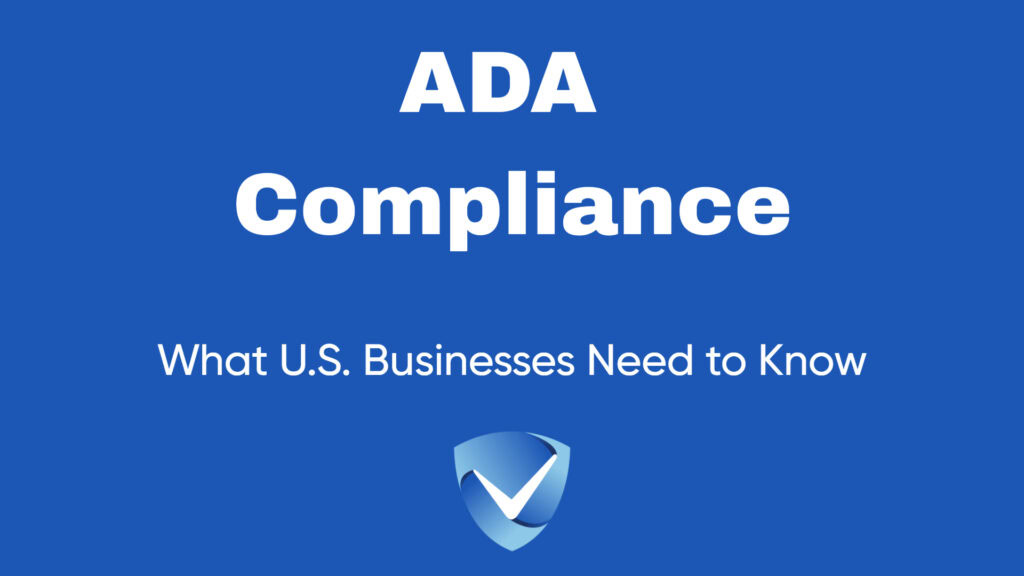What is ADA Compliance?
The Americans with Disabilities Act (ADA), enacted in 1990, is a pivotal piece of legislation in the United States aimed at preventing discrimination against individuals with disabilities. Title III of the ADA specifically mandates that places of public accommodation, including commercial entities, provide equal access to services for individuals with disabilities. This law’s core mission is to ensure that all individuals, regardless of physical or mental impairments, can participate fully in society.
Under the ADA, a person is defined as having a disability if they possess a physical or mental impairment that substantially limits one or more major life activities. The law underscores the importance of accessibility, extending beyond physical spaces to include digital environments. As businesses increasingly operate online, the need for ADA compliance has broadened to encompass websites, mobile applications, and other digital content. This shift emphasizes that equal accessibility must extend to the virtual realm, ensuring that individuals with disabilities have the same opportunities to access services and information as others.
The implications of Title III of the ADA are significant for U.S. businesses. Compliance is not merely a legal obligation but also a commitment to inclusivity and equal access for all consumers. Businesses must proactively assess and modify their facilities and digital properties to remove barriers and enhance accessibility. This may involve implementing assistive technologies, ensuring website compatibility with screen readers, and adopting best practices for accessible design.
Historically, the ADA was a groundbreaking law that set a precedent for how society views and accommodates disabilities. As the landscape of commerce and communication evolves, so too must the interpretations and applications of the ADA to ensure that all Americans can benefit from equal access to services, both tangible and digital.

Overview of Title III of the ADA
Title III of the Americans with Disabilities Act (ADA) establishes important provisions regarding public accommodations, which include a wide range of entities such as restaurants, hotels, retail stores, and recreational facilities. Essentially, this title mandates that any business offering goods or services to the public must ensure accessibility for individuals with disabilities. These requirements extend beyond physical space, as Title III has evolved to encompass digital platforms and services, making it applicable to online businesses as well.
A public accommodation is defined as any establishment that serves the general public. This extends to private entities that provide a service or benefit to the public. Under this framework, businesses are required to make reasonable modifications to their policies, practices, and procedures when necessary to accommodate individuals with disabilities. Moreover, ensuring physical accessibility, such as wheelchair ramps and accessible restrooms, is also a fundamental expectation for compliance.
The evolution of the ADA has seen increased scrutiny towards digital accessibility. Entities must now consider how individuals with disabilities interact with online platforms. This includes ensuring that websites are navigable via assistive technologies, such as screen readers, and that online services are accessible to people with various disabilities. For example, providing alternative text for images and ensuring that videos have captions are practices that are now considered fundamental to adhering to Title III.
In terms of compliance, businesses must actively assess their facilities and digital presence to identify barriers to access and take appropriate measures for remediation. Regular training for employees on ADA requirements and the importance of inclusivity is critical in fostering a culture that prioritizes accessibility. As businesses navigate this landscape, it is essential they stay informed about the continuing updates and interpretations associated with Title III of the ADA to ensure they meet all compliance expectations.
ADA vs WCAG Standards
The Americans with Disabilities Act (ADA) and the Web Content Accessibility Guidelines (WCAG) serve as critical frameworks for promoting accessibility for individuals with disabilities, albeit in differing manners and scopes. Enacted in 1990, the ADA provides a legal foundation aiming to eliminate discrimination against individuals with disabilities across various domains, including employment, transportation, and public accommodations. However, it does not specifically enumerate how digital content must achieve accessibility. This ambiguity often leaves businesses unsure of their obligations regarding website accessibility.
In contrast, the WCAG, developed by the World Wide Web Consortium (W3C), delivers a comprehensive set of technical standards for web content accessibility. These guidelines are organized into three conformance levels: A, AA, and AAA. Level AA is typically recognized as the standard for compliance, and it provides a clearer roadmap for organizations looking to align with ADA mandates. By following WCAG standards, businesses can create websites that are more accessible, thus mitigating the risk of potential legal challenges under the ADA.
Both ADA and WCAG serve critical roles in the realm of digital accessibility. The ADA operates within a legal framework, while WCAG functions as a practical guideline. One of the similarities between them is their aim to promote equal access; however, their approaches differ significantly. The ADA is more focused on the overarching principle of equality, while WCAG provides specific methodologies and techniques for achieving that principle in the digital space. Organizations that adhere to WCAG not only work toward legal compliance with the ADA but also improve their website’s usability, enhancing the experience for all users, including those with disabilities.

Key Differences Between ADA and WCAG Requirements
The Americans with Disabilities Act (ADA) and the Web Content Accessibility Guidelines (WCAG) serve distinct yet complementary roles in ensuring accessibility for individuals with disabilities. While the ADA primarily establishes legal standards for accessibility within various public realms, including websites, the WCAG comprises a set of guidelines aimed at improving the usability of the web for individuals with disabilities. Understanding the key differences between these two frameworks can assist businesses in navigating compliance challenges effectively.
Firstly, the ADA is a federal law that mandates accessibility in all aspects of public life, which encompasses physical spaces as well as digital environments. Non-compliance can lead to legal repercussions, including lawsuits and fines. In contrast, WCAG is not a law but rather a technical standard developed by the World Wide Web Consortium (W3C). It offers specific recommendations to enhance accessibility levels on websites, including guidelines related to text alternatives, adaptable layouts, and user navigation benefits.
Another critical distinction lies in the structure and scope of these frameworks. The ADA does not provide detailed technical specifications, whereas WCAG outlines explicit criteria categorized under four principles: perceivable, operable, understandable, and robust. The guidelines provide a clear pathway for businesses seeking to comply with the ADA. Moreover, meeting WCAG standards can be a proactive strategy to demonstrate compliance with the ADA, yet it does not guarantee immunity from potential legal challenges.
Compliance challenges often arise due to the ADA’s broad civil rights mandate versus the specific, technical nature of WCAG. For example, a business may face difficulties in interpreting how the ADA applies to a newly developed website if they lack familiarity with WCAG guidelines. Therefore, incorporating WCAG recommendations is critical for businesses striving to fulfill their ADA obligations effectively.
Steps to Achieve ADA Compliance
Achieving ADA compliance is a critical obligation for businesses in the United States. The process begins with conducting a thorough ADA audit to evaluate your current accessibility levels. An ADA audit involves assessing various elements, including physical spaces, digital platforms, and customer service procedures. Hiring an expert with experience in accessibility can provide valuable insights during this evaluation.
Once the audit is complete, the next step is to identify potential barriers that hinder accessibility. This may include examining entrances, restroom facilities, parking spaces, and website navigation. Businesses should consider both structural and digital elements when identifying these barriers. For instance, a website may lack alternative text for images, failing to provide a visual description for users who rely on screen readers.
After identifying accessibility barriers, businesses must implement accessible design principles. This entails making necessary modifications to physical spaces, such as installing ramps, widening doorways, and ensuring clear signage that aids navigation. It also involves optimizing website content to meet accessibility standards, such as using proper color contrast, providing keyboard navigation, and ensuring that multimedia content is captioned.
Moreover, businesses should develop a comprehensive accessibility policy that outlines their commitment to ADA compliance. Training staff on accessibility practices is equally important. Employees should be educated on how to assist individuals with disabilities effectively and sensitively, ensuring that all customers feel welcome and valued.
Lastly, it is important to maintain ongoing evaluation of accessibility practices. Regular audits post-implementation help identify any new barriers and ensure continued compliance with ADA regulations. By following these steps, businesses can create a more accessible environment, ultimately enhancing their service offerings and fostering inclusivity.
Conducting an ADA Audit
Assessing digital accessibility is a crucial step for U.S. businesses aiming to comply with the Americans with Disabilities Act (ADA). Conducting an ADA audit not only helps to identify current barriers that may impede accessibility but also ensures that organizations meet established standards. This process should begin with a comprehensive evaluation of the existing digital assets, including websites, mobile applications, and other online platforms.
When undertaking an ADA audit, businesses may employ various tools that assess compliance against Web Content Accessibility Guidelines (WCAG). Automated testing tools like WAVE, Axe, and Lighthouse can provide a preliminary analysis of digital content accessibility. However, while these tools can identify many issues, they cannot replace human judgment. Therefore, it is vital to conduct manual assessments that include testing with assistive technologies, such as screen readers, to gain a contextual understanding of the user experience.
Gathering user feedback from individuals with disabilities is another essential component of the audit process. Engaging users in the evaluation allows businesses to identify specific usability issues that may not be captured by automated tools. Organizations can implement surveys, conduct focus groups, or facilitate user testing sessions to gather pertinent insights. These strategies foster open communication and can reveal unrecognized accessibility challenges.
Involving stakeholders from various departments, including web development, marketing, and customer service, is also critical. This collaborative approach ensures that everyone understands the importance of ADA compliance and their role in achieving it. By empowering employees and encouraging proactive participation, businesses can create a culture of inclusivity and accessibility.
In conclusion, conducting an ADA audit is an integral part of ensuring digital accessibility. By utilizing the appropriate tools, gathering valuable feedback, and fostering collaboration, businesses can enhance their adherence to ADA standards, benefitting both the organization and its stakeholders.

Implementing Accessible Design Principles
Creating an accessible digital environment is paramount for businesses adhering to the Americans with Disabilities Act (ADA) compliance guidelines. The Web Content Accessibility Guidelines (WCAG) 2.1 Level AA present a framework that helps businesses implement effective accessible design principles. The following actionable strategies are essential to enhance inclusivity in digital platforms.
One of the fundamental principles of accessible design is ensuring adequate color contrast between text and background elements. It is critical that the text stands out for users with visual impairments. A good practice is to utilize online contrast checkers that verify compliance with WCAG standards, ensuring that the contrast ratio meets the required threshold for readability.
Providing alternative text for images is another vital design consideration. Alternative text, or “alt text,” serves a crucial role by describing the content and function of an image to users who rely on screen readers. When writing alt text, it is essential to be concise yet descriptive enough to convey the image’s intent without relying solely on the visual aspect.
Ensuring keyboard navigation is also a key design advantage. Many individuals with disabilities use keyboard shortcuts rather than a mouse to navigate digital interfaces. Therefore, designers must ensure that all navigational elements, such as menus and buttons, are accessible via keyboard commands. Consistent focus indicators should be visible, allowing users to easily identify their current location within the navigation structure.
Incorporating these practical design practices not only promotes ADA compliance but also creates a more inclusive user experience, allowing individuals of all abilities to engage with digital content effectively. By prioritizing accessible design, businesses can showcase their commitment to diversity and inclusivity.
Legal Risks of Non-Compliance with the ADA
Failure to comply with the Americans with Disabilities Act (ADA) can expose businesses to significant legal risks. One of the most pressing concerns is the potential for lawsuits. Individuals who feel discriminated against due to barriers that prevent access have the legal right to file complaints. In recent years, lawsuits related to ADA non-compliance have surged, indicating a growing trend that businesses cannot afford to ignore. These legal actions not only create immediate financial burdens due to potential settlements and attorney fees but also can result in long-term costs associated with necessary remediation efforts.
Beyond the risk of lawsuits, financial penalties for non-compliance can be severe. The Department of Justice can impose fines, and exceeding a specific threshold can lead to additional repercussions. Financial penalties serve as a stark reminder that adherence to ADA regulations is not merely a recommendation; it’s a legal obligation. Businesses may also be subject to compensatory and punitive damages depending on the severity of the violation, which can lead to large financial liabilities that dramatically affect a company’s bottom line.
Additionally, non-compliance can result in significant reputational damage. In an era of heightened awareness regarding social responsibility and inclusivity, companies viewed as failing to accommodate individuals with disabilities risk alienating not just potential customers but also attracting negative publicity. High-profile cases, such as the legal struggles faced by Domino’s Pizza, illustrate how public scrutiny can accompany litigation, leading to adverse consumer perceptions. The negative impact on brand reputation can linger long after legal issues are resolved, affecting customer loyalty and overall business performance.
For these reasons, proactively addressing ADA compliance should be paramount for U.S. businesses, not only to avoid the legal ramifications but also to foster an inclusive environment that welcomes all customers. Ensuring compliance can prevent costly legal entanglements, safeguard financial investments, and protect the business’s reputation in the long run.
Case Studies of Non-Compliance Consequences
ADA compliance is a crucial factor for businesses in the United States, as evidenced by various case studies that underline the legal repercussions faced by those who fail to adhere to the Americans with Disabilities Act. One notable case involved a popular restaurant chain that was sued due to its website’s inaccessibility for visually impaired customers. The website failed to incorporate screen reader compatibility, which is essential for ADA compliance. The lawsuit resulted in significant financial penalties, forcing the business to not only pay damages but also invest in redesigning its digital presence to align with ADA standards. This incident serves as a stark reminder that neglecting digital accessibility can lead to substantial legal costs and rebranding challenges.
Another example comes from a retail store that was taken to court after a disabled customer encountered barriers that prevented easy access to the store. The complaint highlighted issues such as inadequate parking facilities and entrance ramps that did not meet the required standards. As a result of the lawsuit, the store was compelled to undergo extensive renovations, which incurred considerable expenses. Furthermore, the incident garnered negative publicity, impacting the store’s reputation and customer trust. This case illustrates that physical inaccessibility can have broader implications beyond legal consequences, affecting consumer perception.
Additionally, a recent accessible e-commerce case sheds light on how digital compliance is as crucial as physical access. An online retailer faced litigation for not providing necessary accommodations, including alternative text for images. The outcome was a court mandate compelling the company to pay damages while also revamping its website to ensure inclusivity. These case studies underscore that businesses must proactively maintain ADA compliance to avoid legal challenges and related costs. They highlight the importance of accessibility in ensuring that all individuals have the opportunity to engage fully in commerce without facing discrimination.
Try Our Free Website Accessibility Scanner

In summary, ADA compliance is an essential consideration for businesses operating in the digital age. The Americans with Disabilities Act (ADA) provides guidelines aimed at ensuring that individuals with disabilities have equal access to services and opportunities, including those available online. Non-compliance not only jeopardizes the inclusion of a significant portion of the population but can also result in legal ramifications and reputational damage for businesses. Therefore, it is vital to recognize that accessibility is not merely a regulatory requirement but also a moral and ethical responsibility.
Moreover, with the increasing reliance on digital platforms, ensuring that websites and online services are accessible has become more pressing than ever. From simple design adjustments to utilizing assistive technology, businesses have a variety of measures at their disposal to enhance usability for all users, including those with disabilities. By embracing ADA compliance, companies not only open their doors to a wider audience but also create a more positive online experience for everyone, which can drive greater customer loyalty and engagement.
As a proactive step, we encourage all business owners to conduct an accessibility audit of their websites. There are numerous free and user-friendly tools available that can help identify accessibility barriers, such as color contrast analyzers and screen reader simulators. By taking these actions, businesses can make significant strides toward creating a more inclusive digital environment. Remember, it is not just about meeting legal obligations; it is about fostering a culture of accessibility and respect that ultimately benefits society as a whole. Let us all commit to making our digital spaces welcoming and accessible for everyone.



